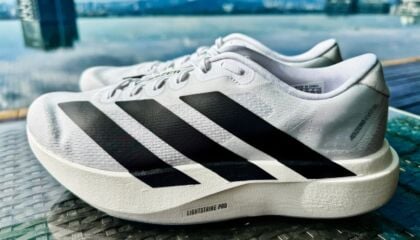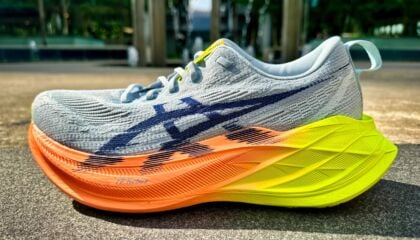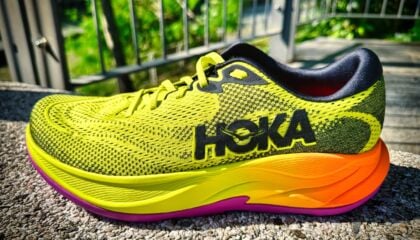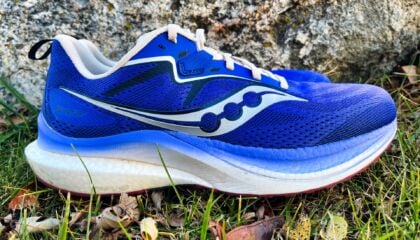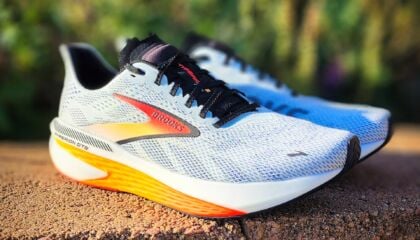
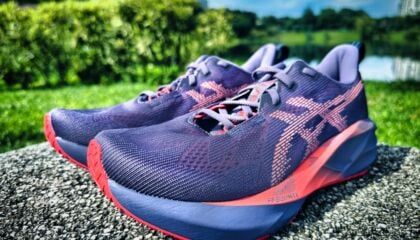
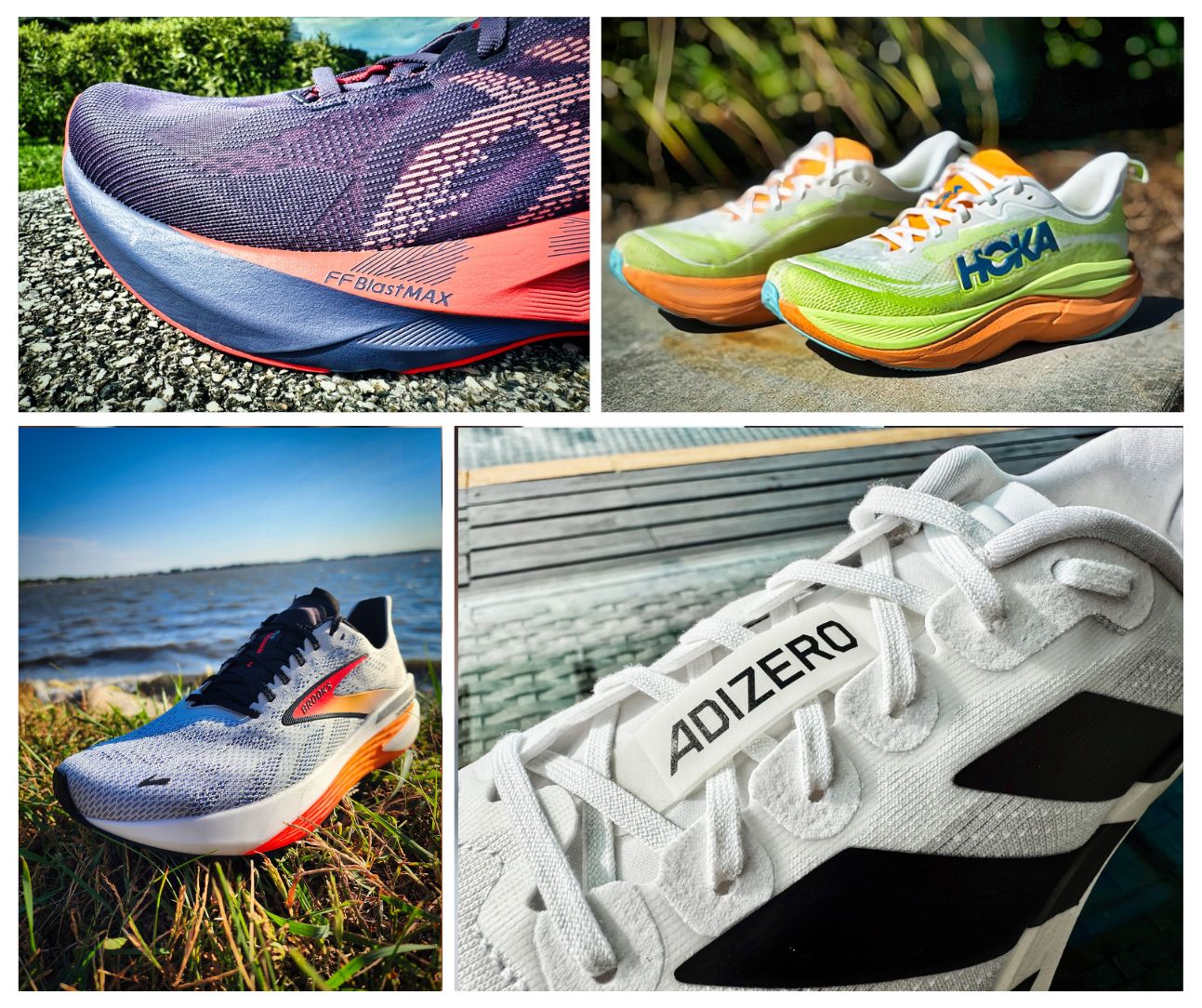






The first thing to consider when choosing a pair of running shoe is what will you be using them for.
Are you just starting out and looking for your first running shoe? You are looking for a daily trainer, or a supportive daily trainer. You’ll want Max Cushion if you are a heavier-set runner or if simply you are looking for the max comfort.
Here are other things you should know when picking a running shoe:
Comfort and Fit
Before you look into different kind of foams or technologies, make sure you pick a shoe that fits you well and it’s comfortable.
Cushioning
The sole of your running shoes will absorb some of the impact of your foot landing on the ground – this is what we call cushioning.
Responsive vs Plush Cushioning
The choice is personal and depends on what you use the shoe for (racing? long slow training miles?).
Stability and Support
If your ankles are your weak spot, you should be looking into shoes that provide support.
The best daily trainers combine balanced cushioning that can handle easy miles and tempo efforts alike, with dependable durability that maintains performance through hundreds of miles.
If you find the Novablast 4 too firm and flat, the Novablast 5 is a worthy upgrade.
If you’re looking for a versatile, neutral daily trainer that won’t break the bank, the Novablast 5 is one of the best in its class.
If you like the firm ride of the Novablast 4, you might find version 5 too soft/mushy.
If you like your daily trainers to have a stiff forefoot with a prominent rocker, the Novablast 5 is not the shoe for you.
Super Trainers are running shoes that are lightweight, fast, and possibly with carbon plate - but with more comfort and durability than a shoe strictly made for racing.
This said, you can definitely race in a super trainer!
If you’re looking for a speed trainer or racer without a stiff midsole, the EVO SL is a great choice.
If you like the Adidas Adios Pro 3 but you want a softer ride with a more comfortable upper, the EVO SL is a great option.
If you need a trainer with a high level of stability, the EVO SL is not the shoe for you.
If you want a really durable trainer that will last over 1000 kilometres, the EVO SL is also not a good choice.
If you are a heavier runner, or if you simply prefer to run on a soft, plush base - modern max cushioned running shoes is what you are looking for.
Comfort is the name of the game for these shoes - not only in terms of cushioning but also in terms of the materials used for the uppers.
If you find the Novablast not cushioned enough or too heavy, the Superblast 2 is a good option.
If you’re looking for a shoe that feels like a super shoe but doesn’t have a stiff plate in it, the Superblast 2 is the perfect shoe.
If you like flexible trainers with lots of ground feel, the Superblast 2 is not the shoe for you.
If you have really wide feet, the Superblast 2 will be too narrow for you.
A lightweight daily trainer should offer enough cushioning to protect your legs during regular training while maintaining a responsive, snappy feel that allows you to pick up the pace when needed.
The ideal shoe should have a breathable upper that locks your foot down securely during faster efforts, while keeping weight under 9 ounces (255g) to ensure it remains nimble enough for race day.
If you really liked the ride of the Mach 4, 5 or Supersonic, but you don’t like the Mach 6, the Rincon 4 is a great alternative.
If you’re looking for an affordable trainer with a firm ride, the Rincon 4 is a great choice.
If you have very wide feet, the Rincon 4’s narrow upper will feel uncomfortable.
If you’re looking for a soft, squishy trainer with high energy return, the Rincon 4 is also not for you.
A great stability running shoe should provide consistent support through your stride without feeling rigid or intrusive, typically using features like guide rails, medial posts, or a wider base to help prevent excessive inward foot rolling.
The best stability shoes balance their supportive elements with enough cushioning to remain comfortable over long distances, while maintaining a natural transition from heel to toe that doesn't fight against your foot's natural movement.
This trainer is for a runner who needs a max cushion yet lightweight stability shoe.
This trainer would not be for a runner who have wide feet
Supportive running shoes of old were heavy and stiff. Luckily materials and technology have improved and now runners that need some support have some fast, lightweight shoes to choose from.
Runners in cross country or track, or anyone who wants a versatile, fast-feeling training shoe for interval workouts through 10-15 mile runs, will want to try this shoe.
Skip on this shoe if you need a strong heel counter, have high stability needs, or have heavy wear patterns on your lateral forefoot.
After 15 years and 1200+ running shoes tests, we can comfortably say there is not a best running shoe brand. The competition is fierce and information is readily available: any brand not producing great running shoes would simply not have survived.
While technically you could run in anything (or even barefoot), running shoes are designed for the simple but unique running gait: from heel to toe-off. Shoes for other sports might be focusing on lateral movements or change of direction, while not focusing in shock absorption and forward motion.
A $70 running-specific shoe will be better than any non-running shoe. This said, more expensive running shoes will generally be better than cheaper options. $100 is a great place to start, with $130-$140 being the median price for great daily trainers. Racers usually cost closer to $250.
A very simple test you can do to check your ankle stability is this. Stand on one foot for 45-60 seconds. Does it come easy, or do you wobble and struggle? In this case, you might benefit from a supportive running shoe.
